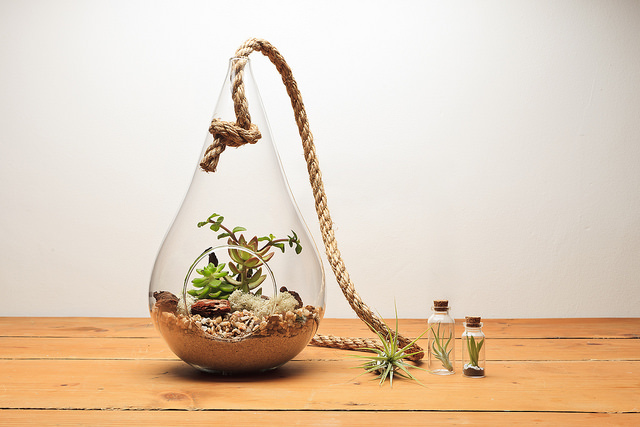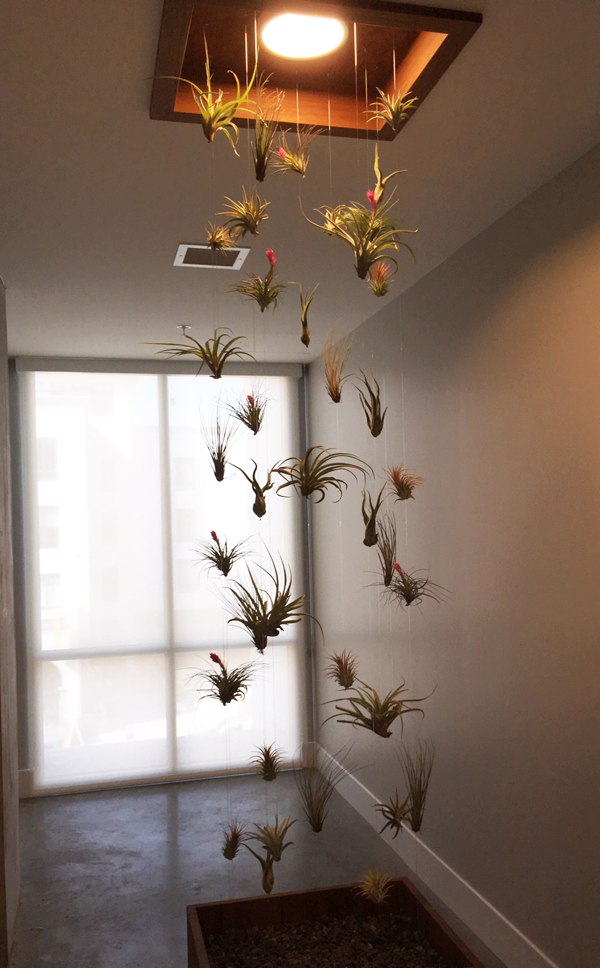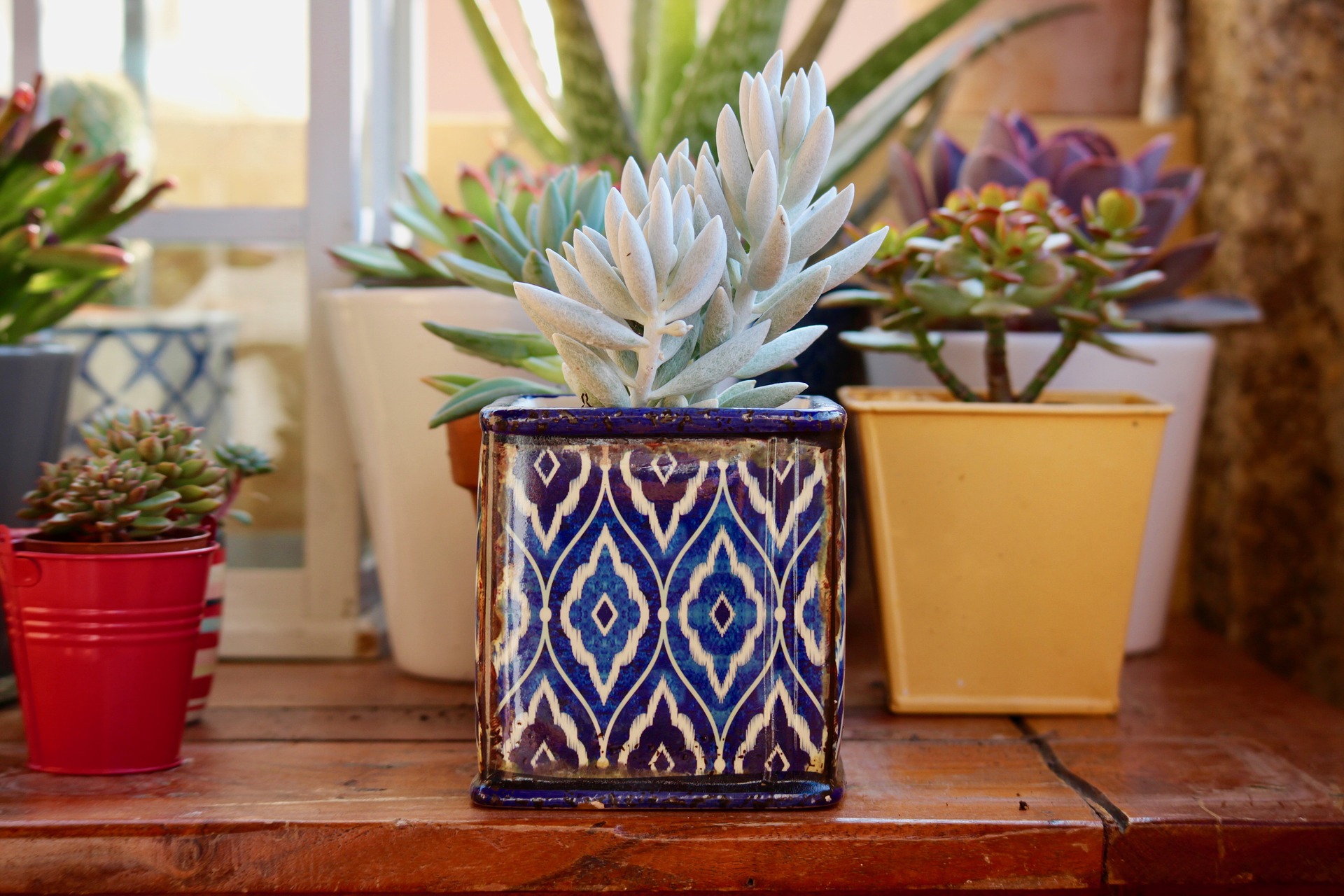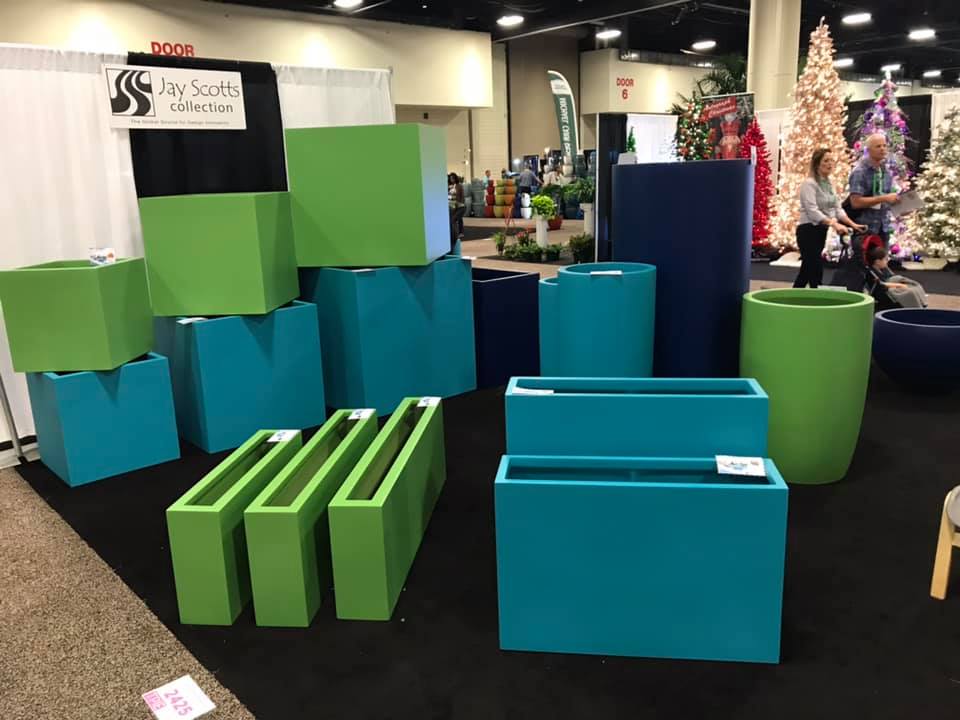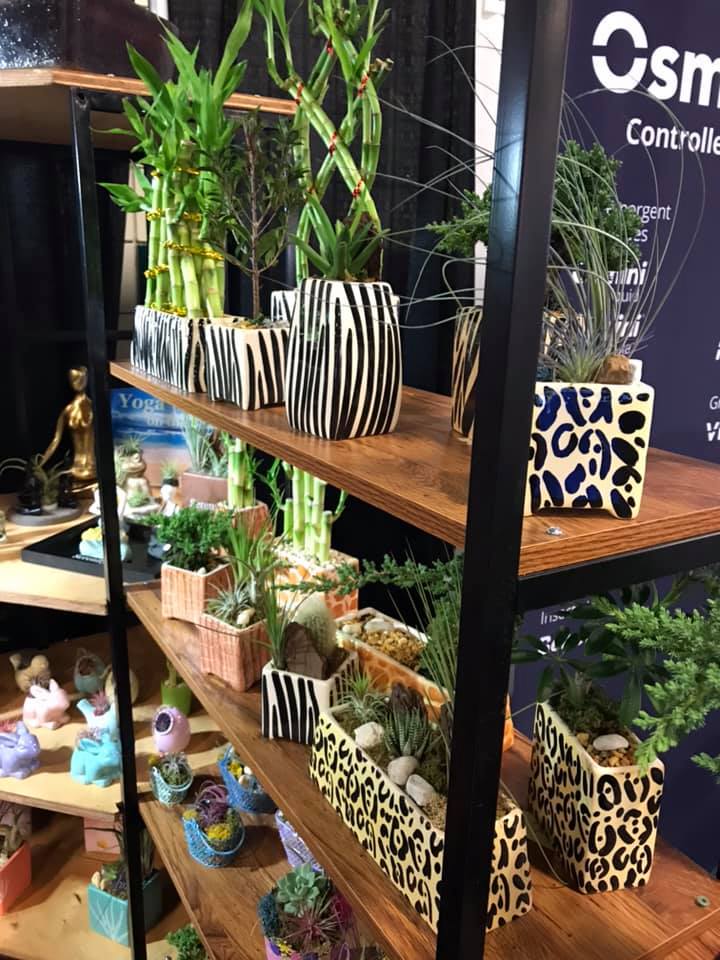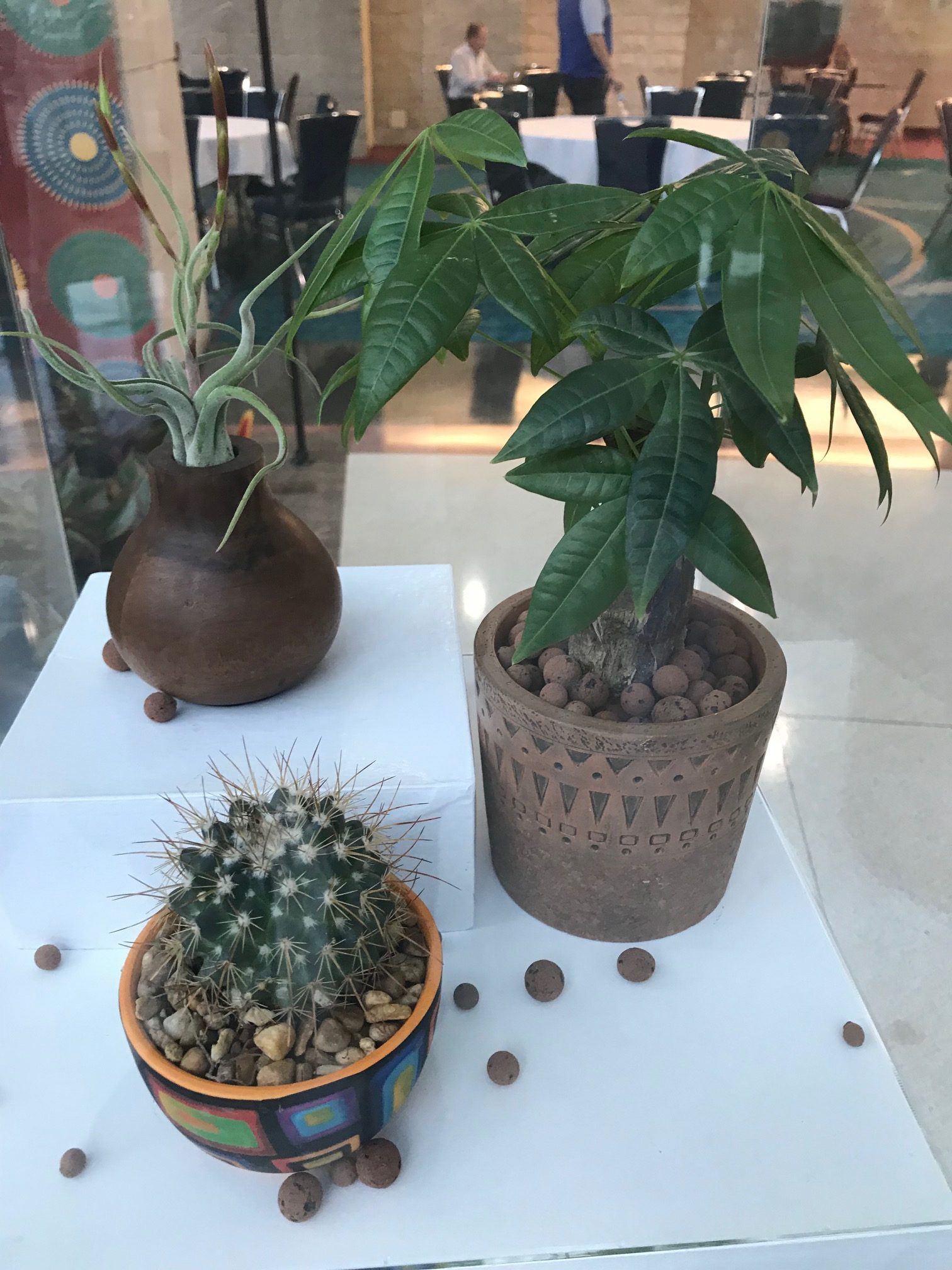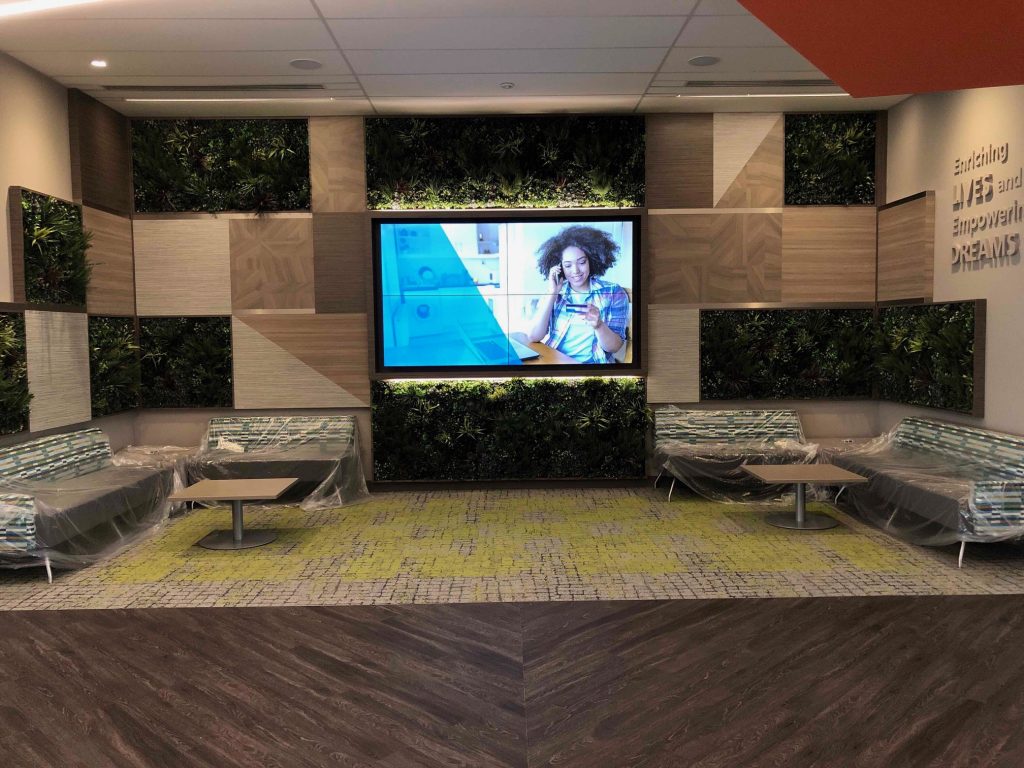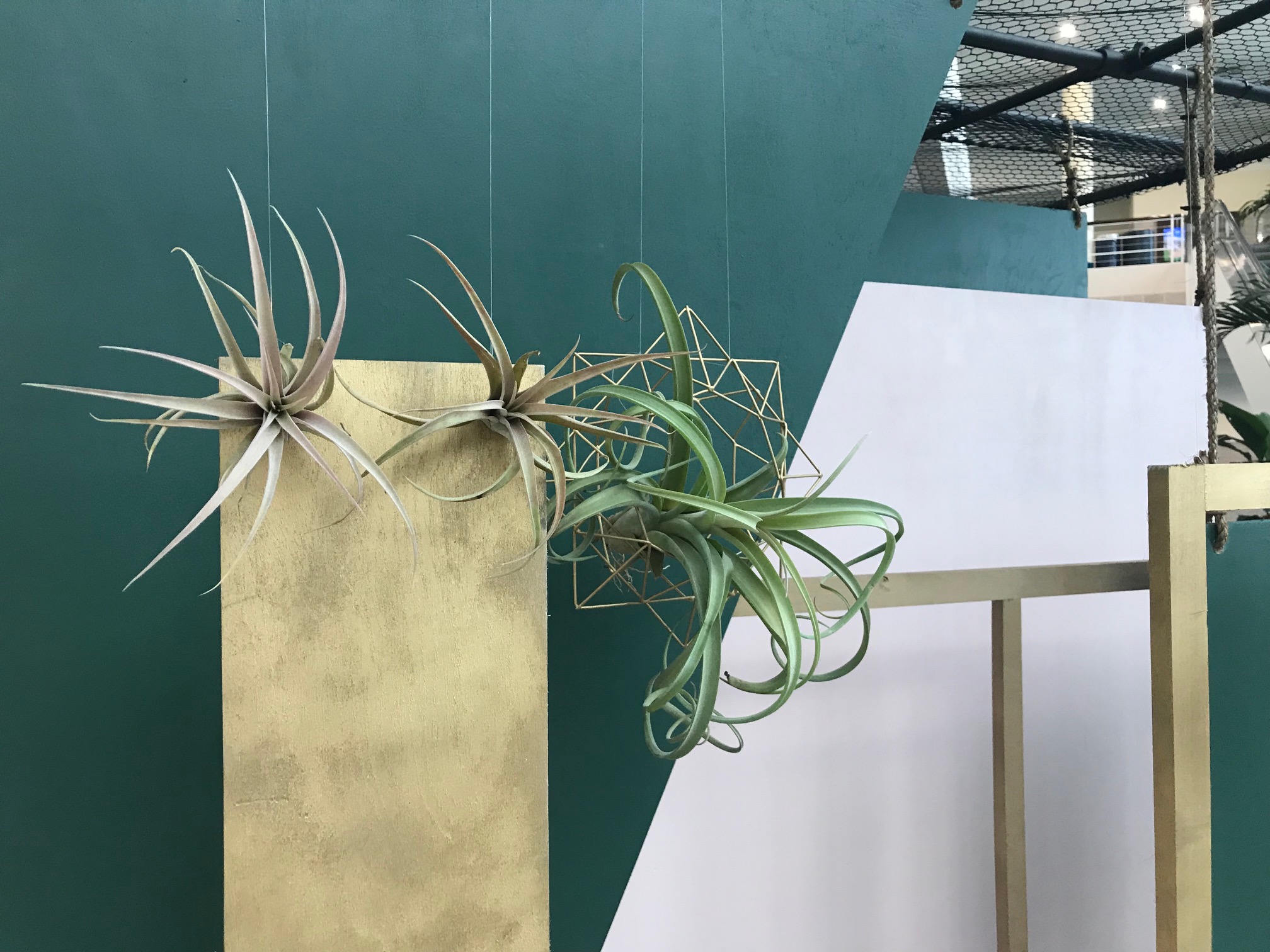
Creative displays of air plants (tillansias) were some of my favorites at this year’s TPIE 2019 show.
After all the New Year celebrations are over, I still have something to look forward to every year: the annual Tropical Plant Industry Expo in Florida. It’s become a tradition for me to start the year meeting with my Plantscaping industry colleagues from 45 states and 37 different countries, and learning about the latest trends and products I can offer to our clients at Good Earth Plant Company.
When you have been in business almost 40 years like we have, you see certain concepts and ideas recycled from time to time. Sometimes we get a new twist on those old ideas. Other times we see concepts reinvented with upgraded materials or technology.
We get an inside look from more than 6,300 of the best and brightest who generously share ideas and inspiration. I return to San Diego with a solid idea of what’s trending. Now, I get to share it with you. Remember, you read it here first: the ten freshest ideas in Plantscaping and indoor plants for 2019.
-
Air Plants Are Everywhere
We began seeing air plants, or Tillandsias, sometime last year. We love them and we’ve used them in creative ways in recent client projects such as Block 19 in Oceanside.
But this year, it’s no exaggeration to say they were everywhere. Tlllandsias are a genus in the Bromeliad family. Tillandsias account for about 25 percent of all Bromeliad species. They are from the warmer regions of Mexico and Central America, but they grow in high altitude, in jungles and rain forests, and deserts. They are called “air plants” for the way they grow, using their roots to attach themselves to trees or other structures and absorb moisture and nutrient through their leaves, not through roots into soil. Tillandsias come in a wide variety of sizes, shapes, colors, and blooms. Some are even fragrant. It’s fun for me to see them popping up again and used in new ways.
-
Millennials, You’re All Over It
Millennials get trashed for being the most entitled, narcissistic generation. Not by me. Millennials get it when it comes to biophilia and integrating nature into their lives. Millennials are all over it when it comes to adding plants to their homes and work spaces. Millennials collect plants with more enthusiasm than I could have ever imagined. For many, plants (particularly succulents) are the new pets in their lives. It’s a healthy obsession and it’s going to pay off in reduced stress, better health, and more awareness of nature.
-
Clearly, Glass and Jars Are Hot
People are beginning to recognize how damaging plastic production is to our environment. They are re-embracing a more traditional, more earth friendly material with plenty of uses: glass. Glass containers, glass in the form of jelly jars, glass shelves, bell jars, gla
ss terrariums, and other methods of display and storage are embracing the use of glass. Using jars and glass containers for plants is one small thing people can do to reject plastic pollution.
-
The Dish: Dish Gardens Are In
Miniature gardening has been popular among people for many years, but they can require a lot of care. A different approach is using low-care succulents to create dish gardens. These drought tolerant dish gardens don’t need constant attention. People don’t get torn between overwatering and not watering enough. Go on vacation or let them dry out, and they’ll be fine. Creative dish gardens can be made to look like a beach scene or another creative landscape. Add some ceramic figures, glass, or other items and there are endless possibilities. They also fit into small spaces unfriendly to more picky plants.
-
Pop Art: Pops Of Color Brighten Any Space
At the TPIE show this year, bright colors were everywhere, especially in new types of containers. Sitting alongside the usual clay and neutrals were eye-popping blues, greens, purples, yellows, oranges and red. If you want to add color but wouldn’t think of painting a room or adding furniture in such bright choices, putting a beautiful green plant in a bold colored container is a great way to go wild with color.
-
Black Panther Inspo: Tribal Patterns
The movie “Black Panther” made everyone fall in love with the mythical nation of Wakanda. Maybe it’s a coincidence, but we are starting to see containers and similar decorative items in tribal patterns. Some of them mimic natural animal patterns seen on giraffes, zebras, and leopards. Your home doesn’t have to literally be a jungle to enjoy this bit of natural inspiration.
-
Grandma Would Love It: Floral Prints
Floral patterns are everywhere: sheets, pillows, upholstery, wallpaper, artwork, you name it. Are you picturing that couch in Grandma’s house with big dated floral prints in gold or olive green? Forget it. Today’s flowers are big and bold pops of color (see #5), and they aren’t always so literal, offering up larger-than-life interpretations of a flower. If you’re ready for a break from solids or geometric patterns, this trend could be for you.
-
Bringing The Outdoors Into The Kitchen
We have embraced this in Southern California for years, but now more of the country is embracing sunlight and a garden climate in the kitchen, Just having a single door connecting a kitchen to an outdoor area doesn’t cut it anymore. Homeowners are blurring the divide between inside and outside. Large garden windows, skylights, even big sliding doors are popular. And since the kitchen is often one of the more humid rooms in your house, with all that natural light it’s an ideal place for happy plants. Several types of herbs can do well in a kitchen with ample light.
-
Arts and Crafts
Whether or not they really made their own decorative items or just bought them from someone clever and creative on Etsy, lots of people love the DIY look. It’s starting to show up in plant containers and displays for plants too. This covers anything from rustic ceramics to hand painted items.
-
Wood You Like It: Custom Wood Features
Nope, this isn’t the wood paneling you might remember from Grandma’s house in the 1970s. Designers are creating custom wood feature walls as a way to add warmth and texture. Some are playing around with natural patterns in wood grains. If you can’t grow a tree in your living room, this is the next best thing. Or you can talk to us about using replica trees indoors. See one of our recent projects here.
One key theme jumping out at us is the effort to bring the natural world indoors, even if you can’t grow plants. Using floral prints, bright colors, tribal patterns and wood textures are all ways to integrate nature visually without having to water or provide optimal growing conditions. It’s a smart way to introduce biophilic design and we are all for it.
Now I’m ready to get to work with just as much enthusiasm after forty years as I did after just one year. It’s up to YOU to make sure it all happens! Give us a call at 858-576-9300 or email me at jim@goodearthplants.com I can’t wait to hear from you. We enrich peoples’ lives with plants!

